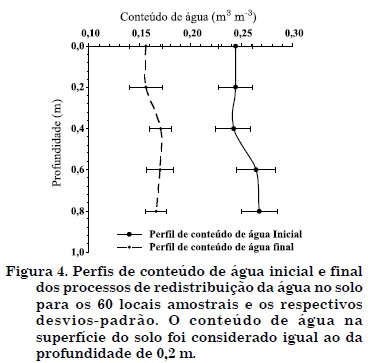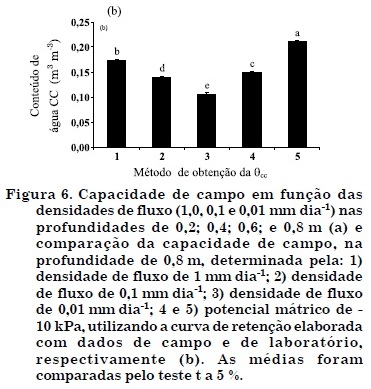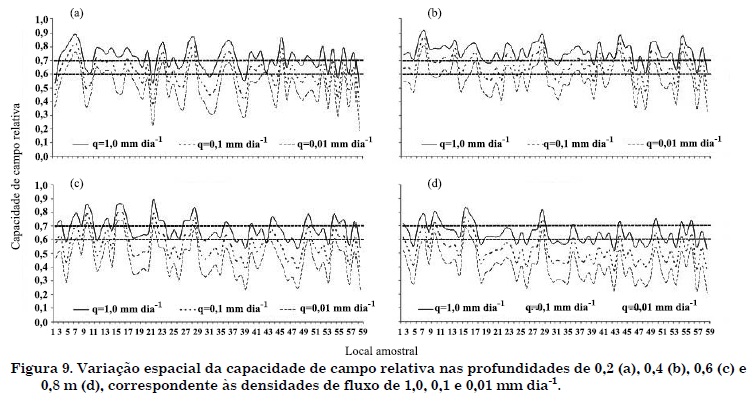Field capacity is a parameter of undeniable importance for an adequate irrigation management. From the reliable determination of soil water content and field capacity, crop yields cam be optimized, maximizing the plant water use efficiency and preventing groundwater contamination by leaching of fertilizers and agrochemicals. The objective of this study was to evaluate field capacity (a) from the calculation of soil water flux density during water redistribution in a classical experiment to determine this parameter and (b) from a given soil water tension in the retention curve. The soil was a medium texture Red Yellow Latosol, in an experimental area of the Escola Superior de Agricultura "Luiz de Queiroz", county of Piracicaba, State of São Paulo, Brazil (22º42'43'' S, 47º37'10'' W, 591 m asl). Sixty neutron probe access tubes were installed in the soil profile in a 5 m square mesh grid (6 x 10 sampling points) and adjacent to each tube two tensiometers (depth of 0.75 and 0.85 m). At the 60 sampling points, a similar experiment as described above was carried out, in which a great amount of water was applied to the soil surface to saturate the profile to a depth of 0.8 m. Then the soil surface was covered with a plastic tarpaulin to avoid water flows. Water redistribution was monitored in the 0.0-0.8 m layer for 20 days. The best estimation of field capacity for this soil was the soil water content at a soil water flux density of 1.0 mm day-1, since the flux densities of 0.1 and 0.01 mm day-1, also recommended to estimate field capacity, are so low that they were not even reached in this study. By the method based on the soil water retention curve, using the soil water content at a tension of 10 kPa in soil water retention curves determined in field and laboratory, also for the 60 experimental points (depth of 0.8 m), it was observed that the values obtained from field retention curves were lower and values obtained from laboratory retention curves were higher than those based on a flux density of 1.0 mm day-1; in comparison, the field measurements were more consistent.
Internal drainage; soil matric potential; water redistribution















